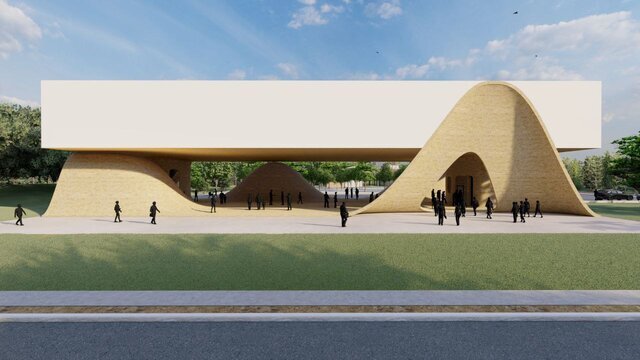Tehran – Iran is about to establish a special museum specializing in a variety of breads traditionally baked across the country. The details of the museum’s construction project, designed by a group of young architects, was explained by Ali Jabarizadegan, head of the group, along with the Iranian National Bread and Wheat Day on April 20th.
He told Isna that bread has long been considered a symbol of nutrition in Iranian culture. When people see bread on the sidewalk, they will pick it up with respect and place it where it doesn’t trample, he added.
Jabarizadegan, a university architectural lecturer, said the National Bread Museum, designed by young buildings such as Sahar Riahi, Ali Joséinzadeh, Pendal Ephta Atarod, Mohammadreza Ephtakari, Amin Safa and Palinaz Misaki, will create opportunities to study bread from the future and past.
“We have sought to design the museum as a city sign related to the daily lives of citizens. The process of breading from wheat grain in this circulation and the role of environmental elements such as the soil, earth’s surface and sky are depicted in the museum’s design.”
The space includes a silent room in the journey, a passage of wheat sensations, a corridor of bread flavours, each of which attracts the client’s hearing, touch, taste, smell and vision.
Referring to bread as a staple food for Iranian people, he said traditional methods of baking bread include baking in a furnace, cooking in ash or hot coal, and baking in teak and frying pans.
He said ancient forgotten bread is on display along with current flatbreads such as the museum’s Labash, Sangak, Tahoon and Barbali.
He continued that the museum includes a pavilion to showcase industrial bread, spaces to stop and listen to memories, places to showcase different combinations with bread, and units to experience traditional bread baking.
Jabbarizadegan emphasized that bread is more than just a food item, adding that it is a reflection of lifestyle, advancement and technology.
Visitors can watch the bread production process in industrial units and traditional bakeries and compare the differences between them in live workshops, he added.
Iranians eat a lot of bread and rank it among the first two countries of the world.
The word Persian bread is “nan.” This can be found in great works by almost every top Iranian poet and literary man, both contemporary and classical, such as Feldousi, Kwaja Abdullah Ansari, Rumi, Sadi, Ebne Yamin, Saib Tabrizi and Sorab Seperi.
In the Iranian state, “Nan” is recognized as “Barakat,” which means God’s blessing. Iranians treat bread with respect for the sacred place in ancient culture.
“Nan” can also be tracked by the Sasanian inscription from the 3rd century AD. Also, analysis of historical documents shows that the word “nan” is mentioned in the text of Pallavi in the 9th century. The definition of Sangak, one of the most popular Iranian breads, was found in the comprehensive Persian encyclopedia “Bohan et Gat” of 1651.
Traditional Persian cuisine has a variety of breads woven together for two main reasons. First, bread is considered the main food of Iranian people, and its consumption in daily diet is very common. Second, Iran is an integrated country that caters to a wide range of ethnic communities.
KD

